Common Problems with the NuTone IM / IMA3303
 Friday, February 8, 2013 at 7:34AM
Friday, February 8, 2013 at 7:34AM NEW IM3303 Loaded with convenience, Simple to operate, Styled for Today!
The IM3303 was introduced in 1994 as a replacement for the IM3003. The IM3303 featured many improvements including a more powerful 15-watt amplifier which gave the IM3303 much better fidelity and some actual bass response.
There were separate bass and treble controls along with a Loudness switch, which added 8dB of bass to the music. The IM3303 had a true digital tuner which was displayed in a backlit LCD panel and the tuner had a 12-station radio memory feature (6AM and 6FM).
The two features which drastically improved the IM3303 over previous models were the new "stand-by" feature and the "Remote Radio Control" function.
One of the most common complaints with any NuToneIntercom System was the constant backgroundhiss that could be heard on all of the stations in a home. This hiss was the amplifier's "white noise" and it was something that you just had to live with if you had a NuTone Intercom System.
This problem was solved with the IM3303 by designing it with a "stand-by" mode. When the intercom functions were being used, and with the radio turned off, the IM3303 would be in "stand-by" mode, which means the amplifier was turned off. This allowed the system to be silent on all of the stations.
The stand-by mode also meant that with the system in this third state (stand-by) there could be a new control function added to the system, while still using NuTone IW3, 3-wire cable.
The new feature was "Remote Radio Control", which allowed anyone in the home to turn the radio on throughout the house and scroll through the 12 pre-set radio stations from any of the inside or patio remote stations. The remote radio control functions were accessed with the "End Call" pushbutton on the remote stations. Since the remote radio control feature was designed into the master station and not the remote stations, it would work even if you have stations from the previous IM3003 model. This was hugely popular feature, especially with more and more 2-story homes being built.
The IM3303 used the same design platform as the IM3003, which meant it was backwards compatible with all of the wiring and remote station from the IM3003 system. This allowed customers to have just their IM3003 master station replaced with the IM3303 and save some money.
PRODUCTION HISTORY:
While officially there are only IM and IMA 3303's, there are four different versions of this model. If all four versions were placed side-by-side you would not be able to tell them apart, but they are all very different from each other electronically.
The original IM3303 was manufactured from 1994 through about 1996. These first versions are easy to identify by the interconnect cables on the back of the master station. These early versions use interconnect cables which are made up with individual small white wires, which are terminated into their plug connectors. While I don't have a picture of this version, they are easy to identify by the messy look of the cables on the back of the master station.
The first revision was in 1996 which remained in production until 2001. This second version still carried the IM label and most of the changes were to streamline the manufacturing of the IM3303 along with the newly introduced IM4406.
The IMA3303 was introduced in late 2001 and it was basically an electronic update to the design which was brought about when NuTone changed the vendor who was manufacturing their intercom equipment.
At this point, all of the manufacturing had been done in Japan by two different vendors, but this was about to change. Around 2004, NuTone decided to move the manufacturing to China. While these final units have the same IMA label they are different from the previous IMA versions.
What all of this means is that basically there are four unique versions of the 3303, and for the most part none of the boards are interchangeable.
Since exact documentation on production dates and design and boards changes were not kept by NuTone, it's very difficult to understand which boards are interchangeable with each other. It is best to have your 3303 master station repaired and keep its original boards whenever possible.
COMMON PROBLEMS:
Problem #1. Self-Activating "Remote Radio Control":
Like any new NuTone intercom model there were some initial problems, however they weren't anything to serious with the IM3303.
The most common service call on the original IM3303 had to do with the remote radio control feature.
When this feature is activated, the LCD panel on the master station will display the letters "IU" which stands for "In-Use". When the system is In-Use, all of the other functions are blocked until the In-Use is complete. The idea was to prevent a situation where a user might think that the system had stopped working for some reason.
The problem with the remote radio control was cause mainly by Patio Stations that would have moisture buildup on the switch circuit boards. This moisture would cause small short-circuits and the remote radio feature would self-activate and turn the radio on all by itself...usually in the middle of the night!
What the homeowner would typically see is the LCD display showing a constant "IU" and the radio would switch ON, then the tuner would scroll through the preset stations, then the radio would switch OFF and the cycle would repeat over and over.
NuTone solved this problem by have a sealant applied to the Patio station switch circuit board, which covered the solder traces and sealed the board from moisture.
Problem #1.5
There is another cause for self-activation on the IM /IMA3303. This can be caused by a failure with the 74 Series Logic IC's that are mounted on the Control Board.

These IC's work in conjunction with the micro-controller (read about the micro-control below), and if they are faulty, they can be the source of self-activation problems.
These logic IC's are commonly available and fairly easy to replace with the proper tools.
Problem #2. Improper Intercom Communication:
Another problem with the original IM3303 was erratic Intercom Communications.
This problem was not caused by the typical problems with remote stations or control switch problems, it was with the intercom control relays in the IM3303 Master Station.
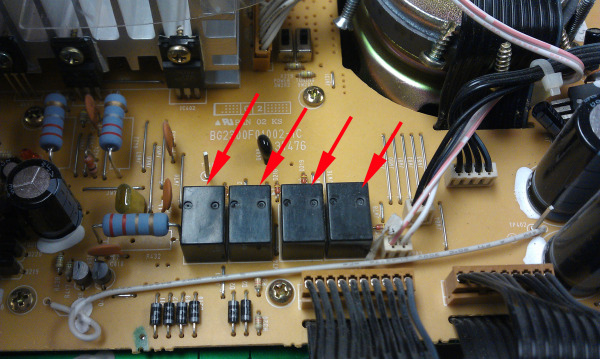
Mounted on the Main Circuit Board in the IM3303 there are four micro-relays that control the intercom communication functions. On some units these relays would fail or become stuck and the intercom functions would not operated correctly.
This seems to be a problem only with the IM3303 units that were manufactured in the first 2-3 years and it was not a problem afterwards.
These relays are commonly available and are straight forward to replace.
Problem #3. Discoloration of the IM3303 Faceplate:
Originally the IM3303 was going to be available in 3 finishes: White, Black and Light Maple.
In reality, only the White model was ever produced. Due to an insufficient amount of UV inhibitor in the plastic of the IM3303 Faceplate, the faceplates will slowly turn yellow over time. This is especially a problem with units that get a lot of direct exposure to the sun. Apparently the yellowing is caused by Bromides being released from the plastic by the UV light.
COMMON PROBLEMS with NuTone IM / IMA3303's TODAY:
The original IM3303 is almost 20 years old, and even though this has been a fairly trouble free design, we are starting to see patterns of failures for common problems.
As with all NuTone Intercoms designed since 1984, the IM3303 and IMA3303 are powered up all of the time. Even if you don't use your system very often, it is still accumulating hours day after day. A 20 year old IM3303 will have accumulated 175,200 hours since it was originally installed.
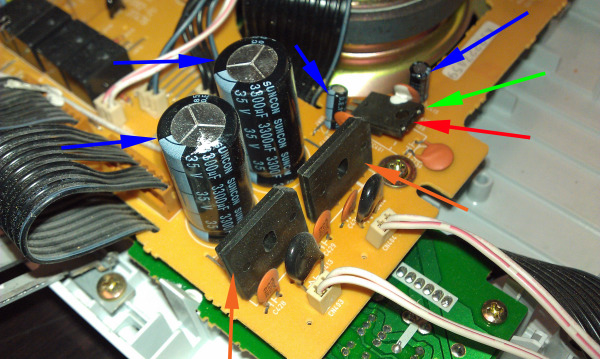
(NuTone IM3303 Power Supply)
As with any electronic device, it's completely normal for the components in the power supply to fail once it has exceeded its normal life expectancy. Fortunately the IM3303 has a simple power supply design and rebuilding it is not a complicated task.
However, there are two other problems which we are beginning to see with both the IM3303 and IMA3303 which are not as easy to solve, and one of them is related to the failure of the power supply.
Problem #4 - Micro-Controller Problems:
All of the functions in an IM / IMA3303 are controlled by a Micro-Controller, which is something like the micro-processor that runs your computer or cell phone, only it has much less processing power.
As an example of what the Micro-Controller does: When you want to listen to the radio on your IMA3303 you push the FM button and the radio turns on. How did this happen? The Micro-Controller did it.
Inside the Micro-Controller is a simple "program",or set of instructions. When you push the FM button you are causing the micro-controller to launch a series of instructions which include many steps, such as:
1. Turn on the red LED indicator next to the FM button
2. Change the LCD display from the clock time to the radio frequency display
3. Display the last FM radio frequency that was played on the master station.
4. Turn the radio tuner on
5. Switch the tuner to the FM radio band
6. Tune the FM tuner to the last FM frequency that was played
7. Turn the systems amplifier on
All of these steps happen almost instantaneously and you would think that they all happened as one big event (like flipping a light switch on), but they are actually a series of events controlled by the instructions in the micro-controller.
This is why the IM3303 and IMA3303 have a reset button. Sometimes after you experience a power outage or a power brown-out, your 3303 will not work correctly. You may not have any radio, or the intercom will not work, or the door chime will not ring, why? Because when the power came back on, the micro-controller came back on also, but it's sort of confused.
The instructions inside the micro-controller are scrambled because of the power outage. This is where the Reset button comes in. When you push the reset button, you clear the micro-controller and restore the instructions from the factory default settings.
This is why when you perform a reset you lose all of the programmed information in your IM / IMA3303, including the time and your favorite radio station presets.
So, how does a power supply failure affect the micro-controller?
We have seen some cases where the customer's power supply had failed (causing a fairly loud hum throughout the intercom system) and instead of haveingthe master station repaired, they simply turned all of the volume controls down so they couldn't hear the hum.
While this tactic eliminated the annoyance of the hum, it did not fix the failed power supply. In each case, more than a year passed before the homeowner contacted us to have their IM3303 repaired.
We expected these to be a normal IM3303 power supply rebuild; however, after the rebuild was complete there were some unexpected surprises.
In one case, after the power supply rebuild was complete that IM3303 came back to life, but, when we were performing the final checkout procedure, we noticed some strange operational problems.
This IM3303 acted weirdly. When the FM button was pushed the red LED lit up for AM, the FM radio turned on, but the display didn't switch to the FM frequency for almost 5 seconds, and the frequency that was displayed wasn't the radio station that was being listened to, until that switched about 3 seconds later. Unfortunately, using the rest button didn't help at all.
When something like this happens with a master right after a repair has been done, it's natural to think that something was over looked or the repair was done incorrectly. The set was pulled apart and we started looking for the cause of the strange operation. Here's what we found:
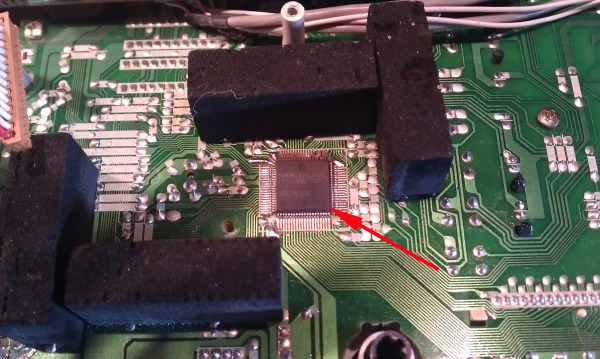
The Control Circuit Board is where the micro-controller is located. It's a small device about 1" square. We inspected the micro-controller and it looked OK, so the circuit board was removed and when we flipped it over we found a dark brown square on the back of the circuit board, directly under were the micro-controller sits.
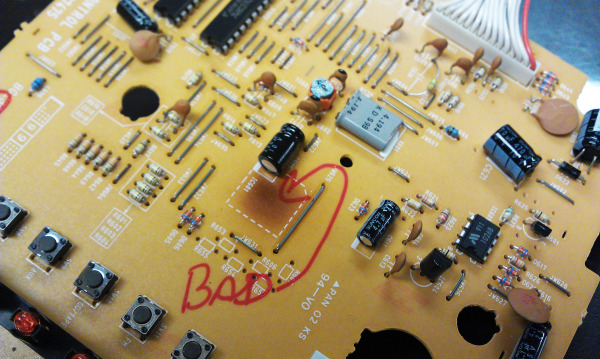
The dark brown area indicates that the micro-controller had been very hot for a very long period of time, enough time to discolor the fiberglass circuit board material. The excessive heat in the micro-controller was cause by excessive electrical voltage from the failed power supply.
The erratic operations were cause by the damaged micro-controller which no longer was able to follow its set of programmed instructions.
Now for the really bad part: the micro-controller is not a replaceable component. While the actual component is available to purchase, and while it would be possible to remove the original micro-controller and solder a replacement to the board (with some very specialized equipment), it is not possible to program the new micro-controller because no one has the program, not even NuTone.
The original micro-controllers were programmed when the boards were manufactured in either Japan or China, and when the production ended, the ability to program the micro-controllers vanished.
The moral of this story is that if you have a failed IM / IMA3303, make sure that you get it fixed before the problem causes damage that is almost impossible to solve.
There was a happy ending in the final chapter in the repair of this customer's IM3303, because we were able to substitute a used control board from another IM3303 and get her system working again.
Problem #5 - AMPLIFIER FAILURES:
The IM / IMA3303 has a 15 watt amplifier which is 10 times the output of the IM3003. The amplifier in the 3303 is a robust design and it is more than capable to drive the maximum number of 13 remote stations.
Even thought this amplifier is well designed, we have seen some patterns that indicate the possibility of a dramatic failure cause by either gross maladjustment of the system controls or by shorted wiring between the master station and the remote stations.
There doesn't seem to be any warning with this type of failure. As reported by homeowners, all a sudden the system simply failed. However, there are probably warning signs which were overlooked or ignored by the homeowners.
What we see on these master stations is a drastic failure of the components in the amplifier of the unit.
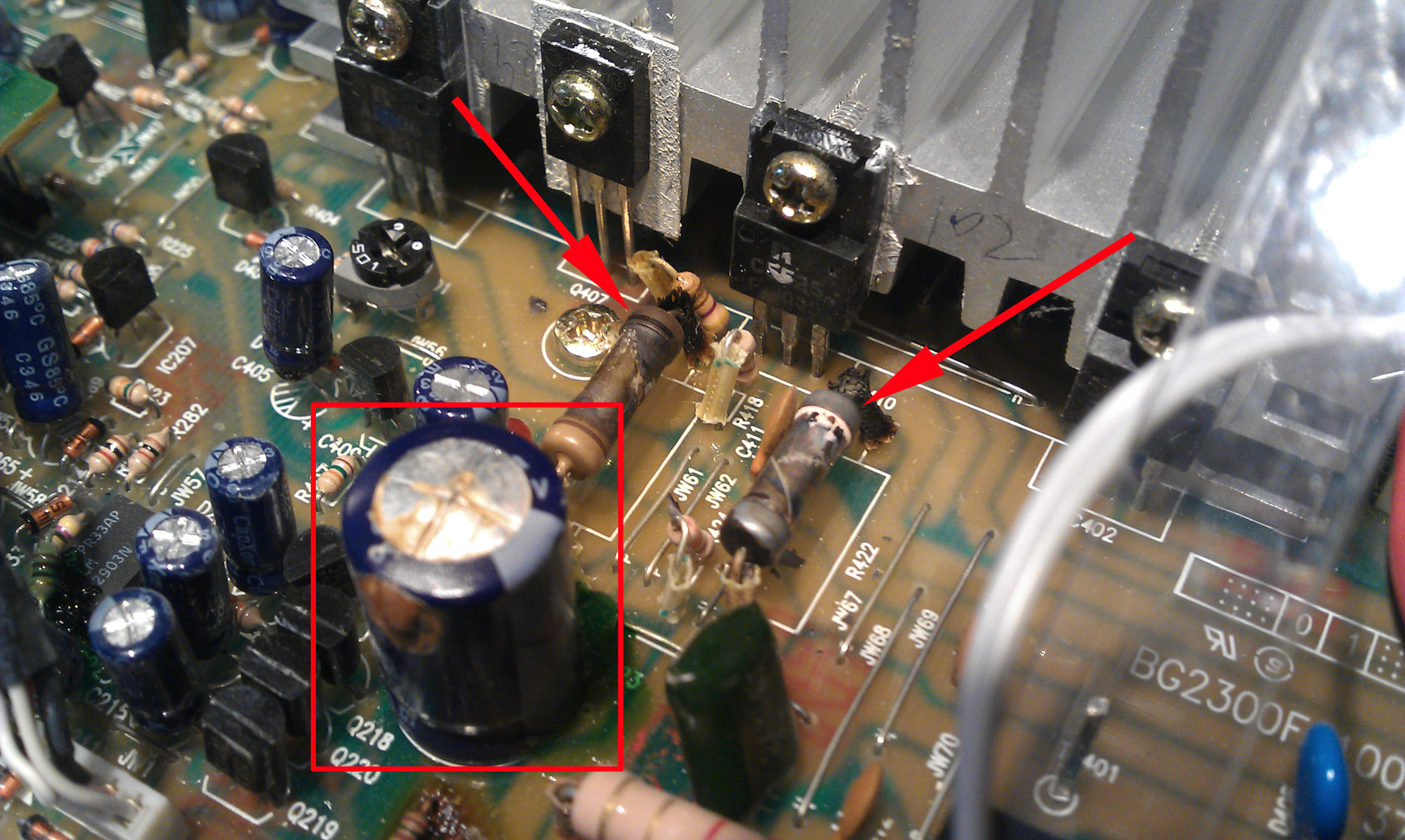
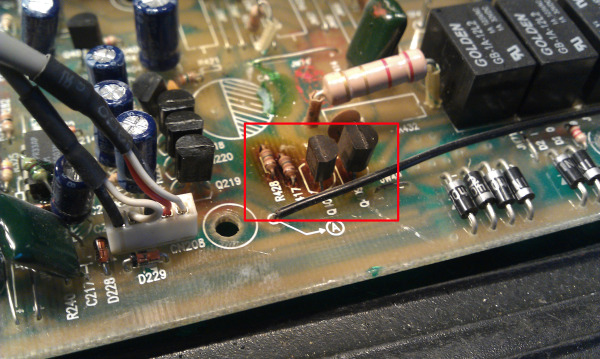
A visual inspection will reveal two severely burnt resistors (R422 & R426) along with the signs of excessive heat in the area around transistors Q408 & Q406. Typically capacitor CXX will be ruptured also.
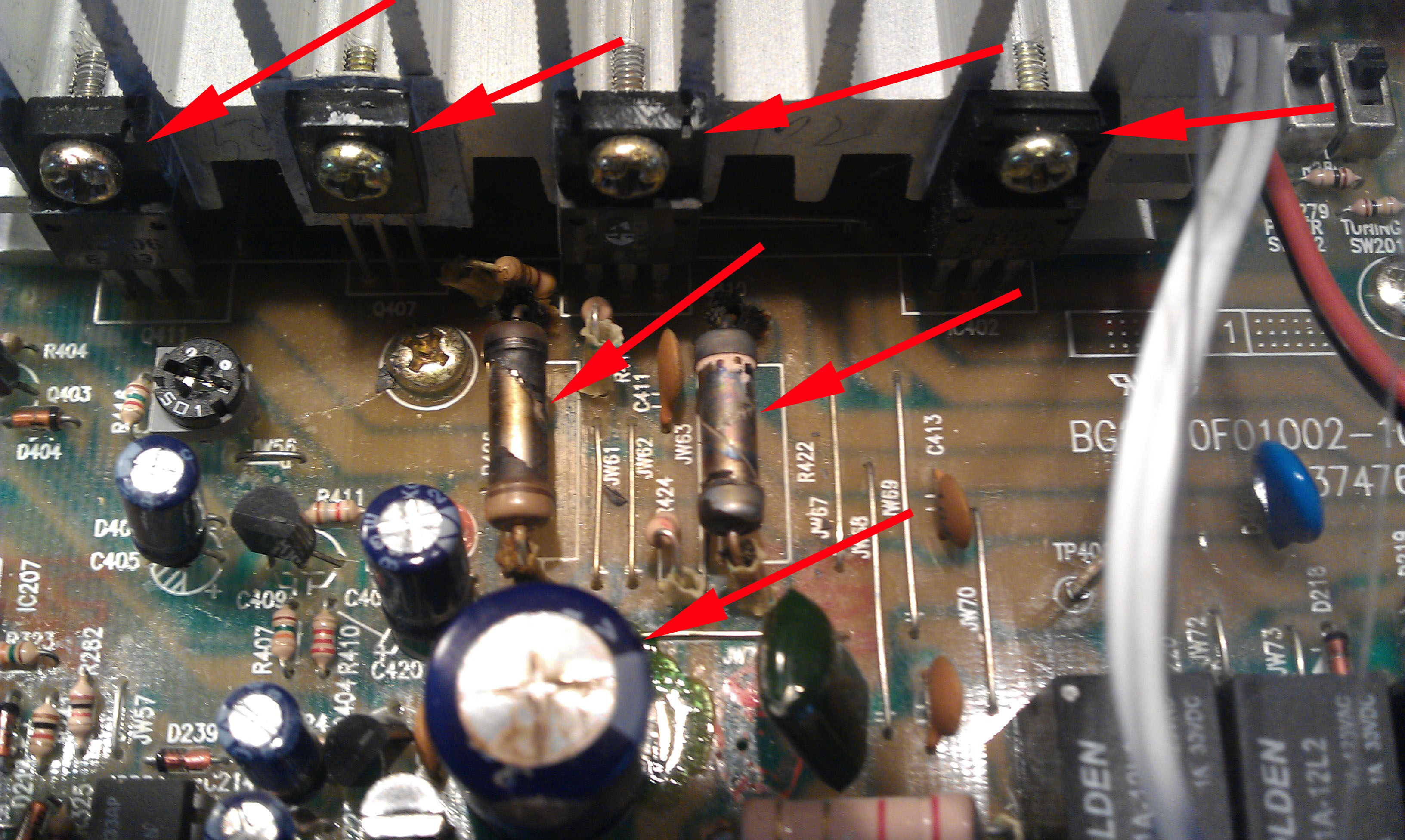
While these obvious failures may seem bad enough, there are usually many more failed components on the board.
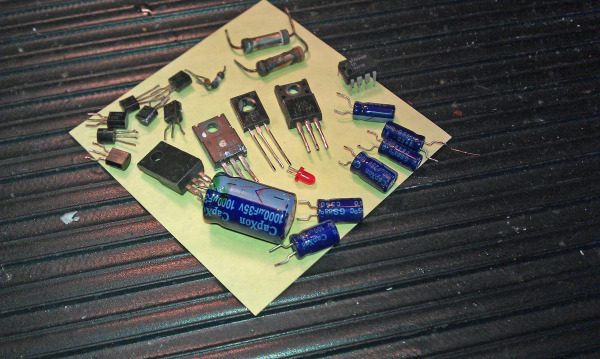
The typical IM3303 with this type of failure will have 10 shorted transistors, one failed voltage regulator, four burnt resistors, seven failed capacitors and one dead op-amp chip.
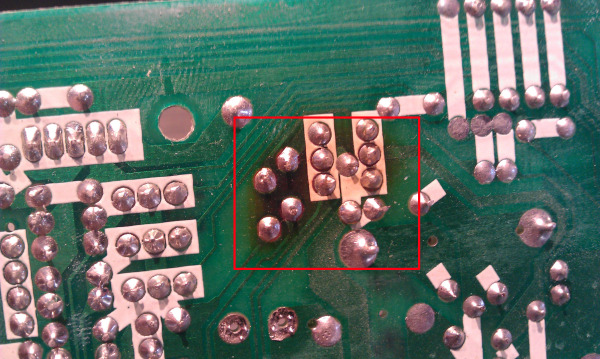
A serious by-product of this failure is caused by the heat that these failing components generate. The area of the circuit around these hot components damages the copper traces, and when the failed parts are removed, the traces will lift off the boards and sometimes break.
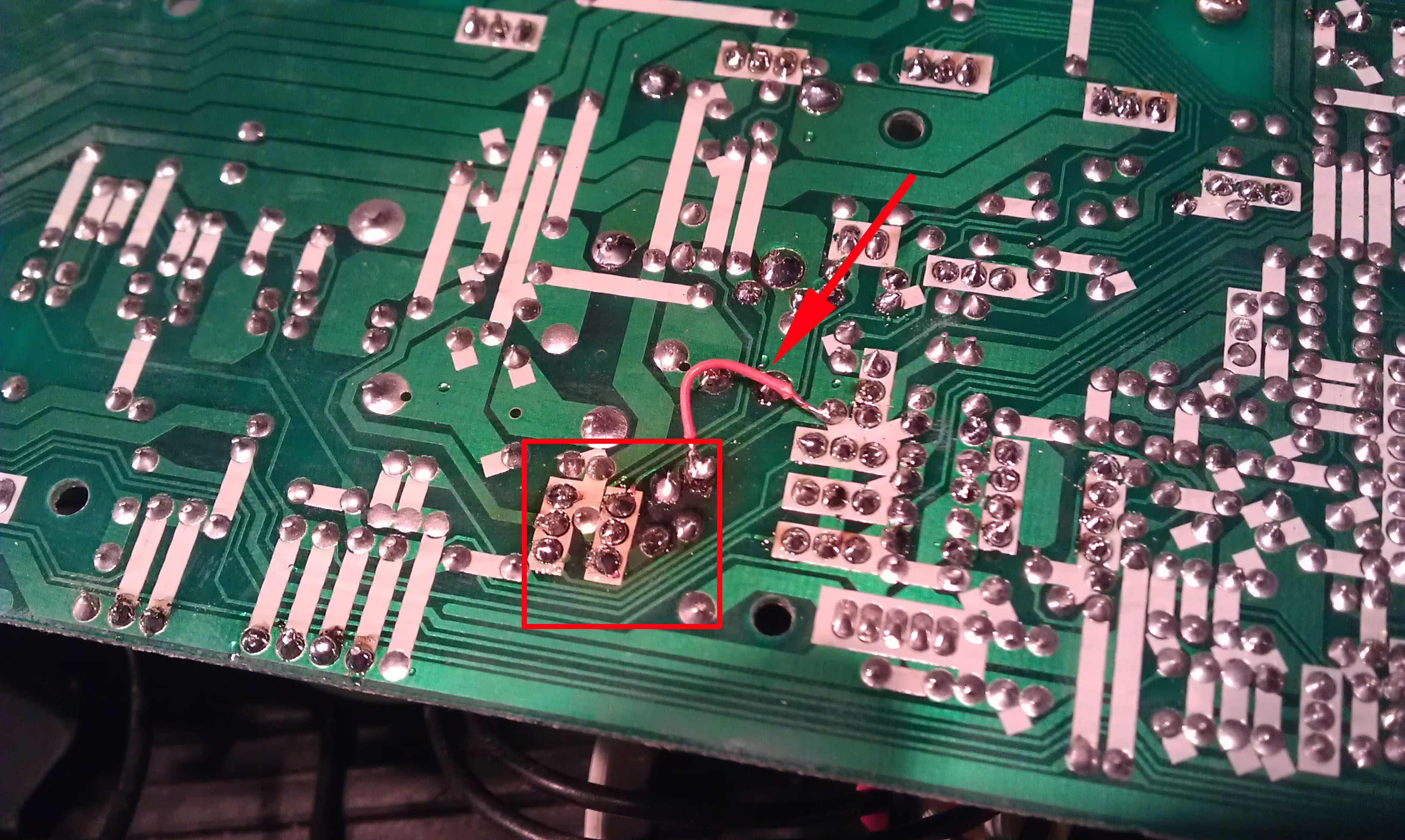
It is often necessary to solder small jumper wires to bypass the broken traces. In other cases the traces will have to be repaired, which is a very labor intensive process.
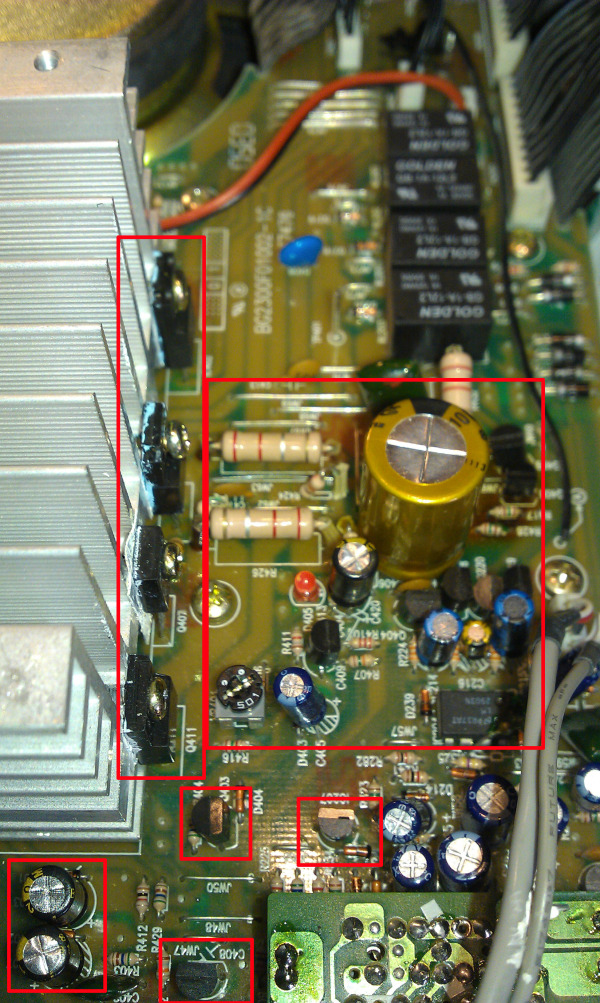
The good news is that all of the needed components are commonly available and none of them are very expensive.
See All of the IM / IMA3303 Pictures Here
Ask a question about your IM/IMA3303
 Cindy & Christopher
Cindy & Christopher
Amplifier Failure:
I had another IMA3303 delivered to the shop with the beginning stages of exactly the same problem I outlined in this repair. Since the IMA3303 had not completely failed, I was able to do some testing before I started the repair.
When the IMA3303 was connected to the two NuTone 301T transformers (16 volts 30VA) the transformers were so overloaded that the output voltage was reduced to under 9 volts on each transformer. The power supply circuits in the IMA3303 are designed to create two separate voltage rails within the IMA3303.
By measuring the current on each transformer it was easy to see which circuit had the fault. By isolating different parts of the power supply circuit (by removing components) it became clear that the output transistor had failed.
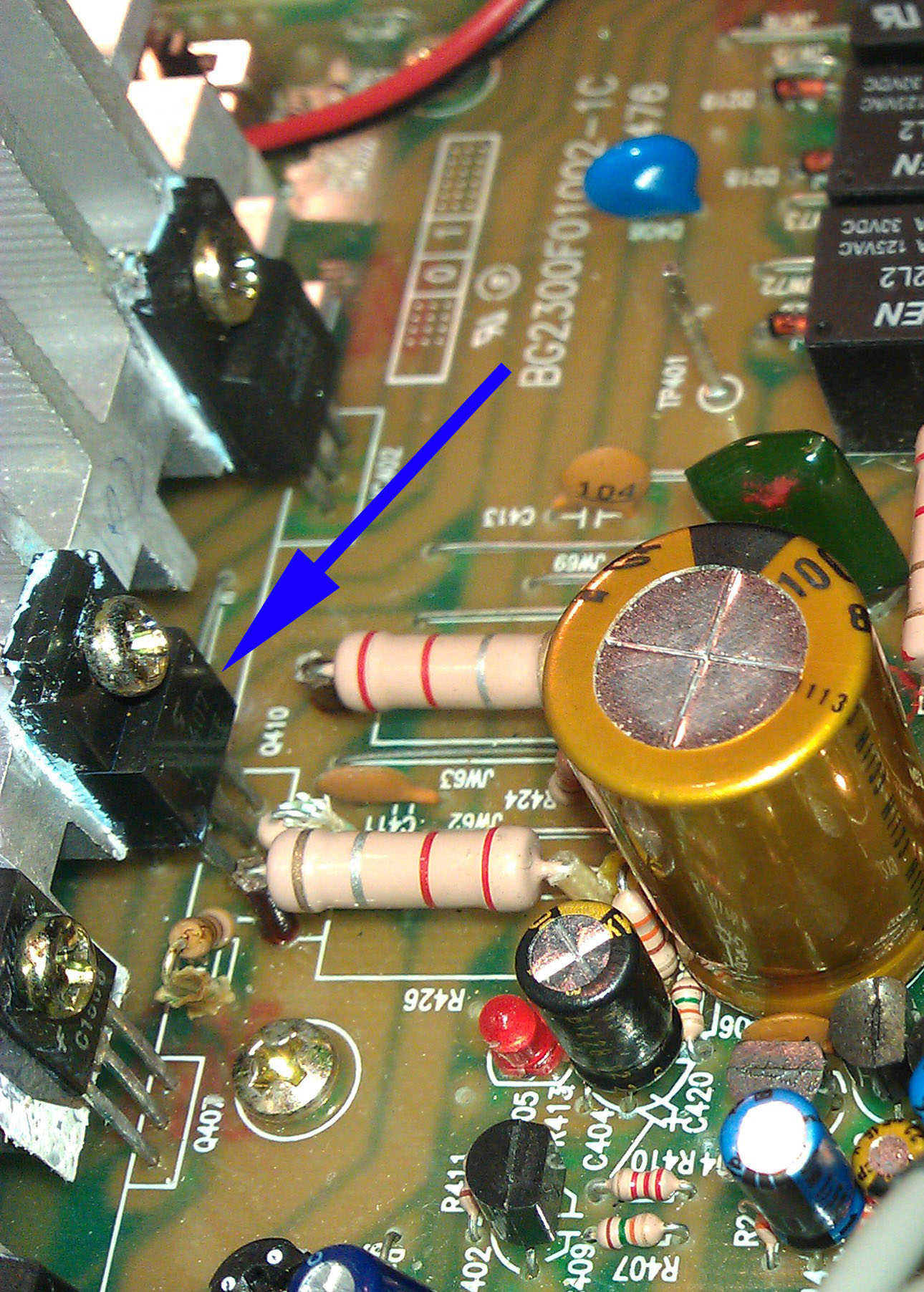
Once Q410 was removed and checked I found that it had a short between B (base) and C (collector). I replaced Q410 and reinstalled all of the componets I removed for troubleshooting purposes.
After the replacement of Q410 this IMA3303 worked correctly again. The real question is what cause Q410 to fail? I suspect that the problem is with the installation wiring for this system.
If there is a short on the Center-Red wiring to one of the remote speakers it can overload the output of the IMA3303 which could cause Q410 to fail.
I will be setting up this scenario on the work bench to see if I can replicate the failure.
 Cindy & Christopher
Cindy & Christopher
Are Amplifier Failures are becoming common problem?
This past week I had another IMA3303 delivered to the shop with a failed amplifier. This IMA3303 was only 2 years old and the owner had just moved into the home, so there is no real history about the system.
The complaint was simple, nothing worked and the system just had a loud hum everywhere.
What I found was a IMA3303 with a failed amplifier. This time the failure was somewhat more dramatic than the last 3 units that have had this problem.
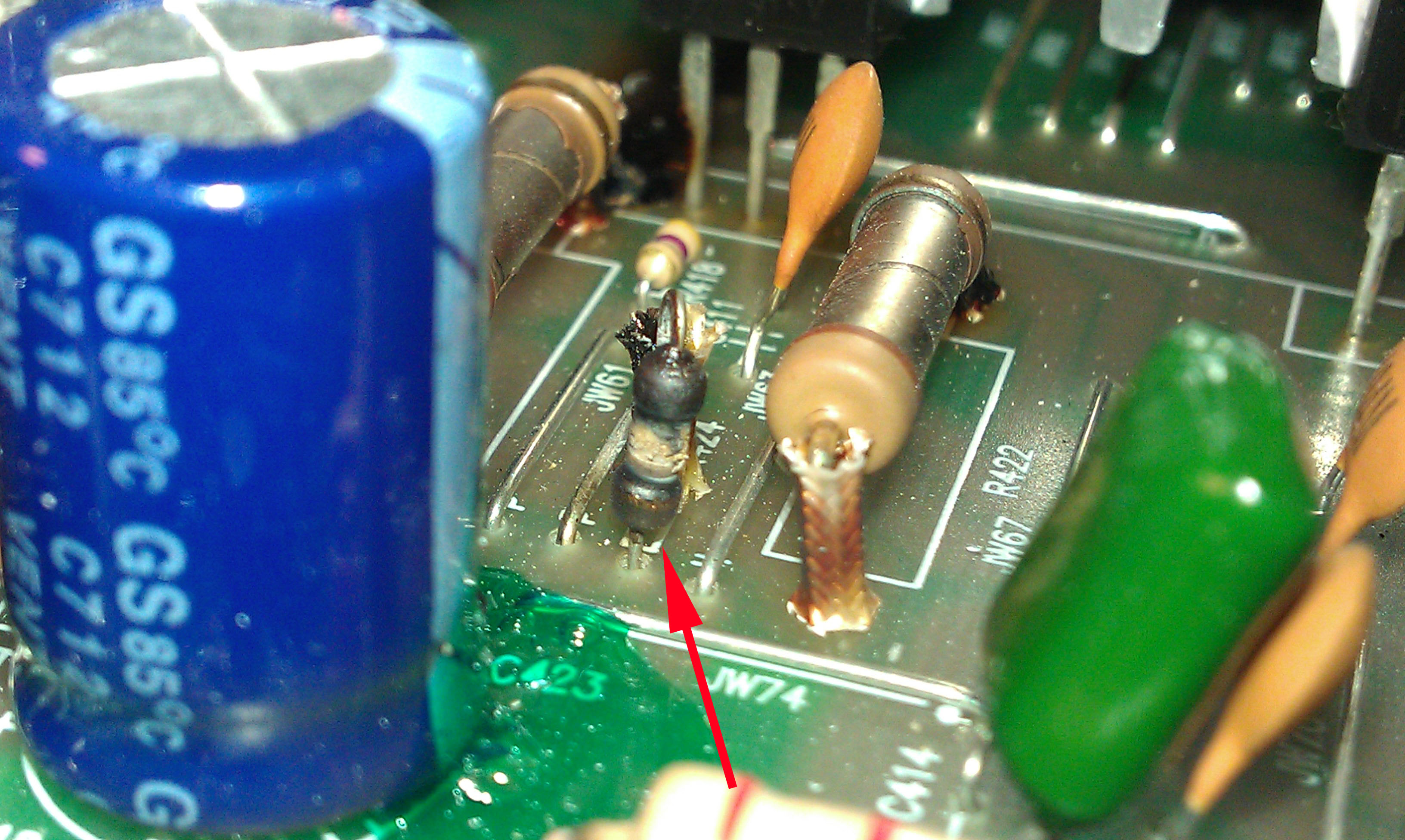
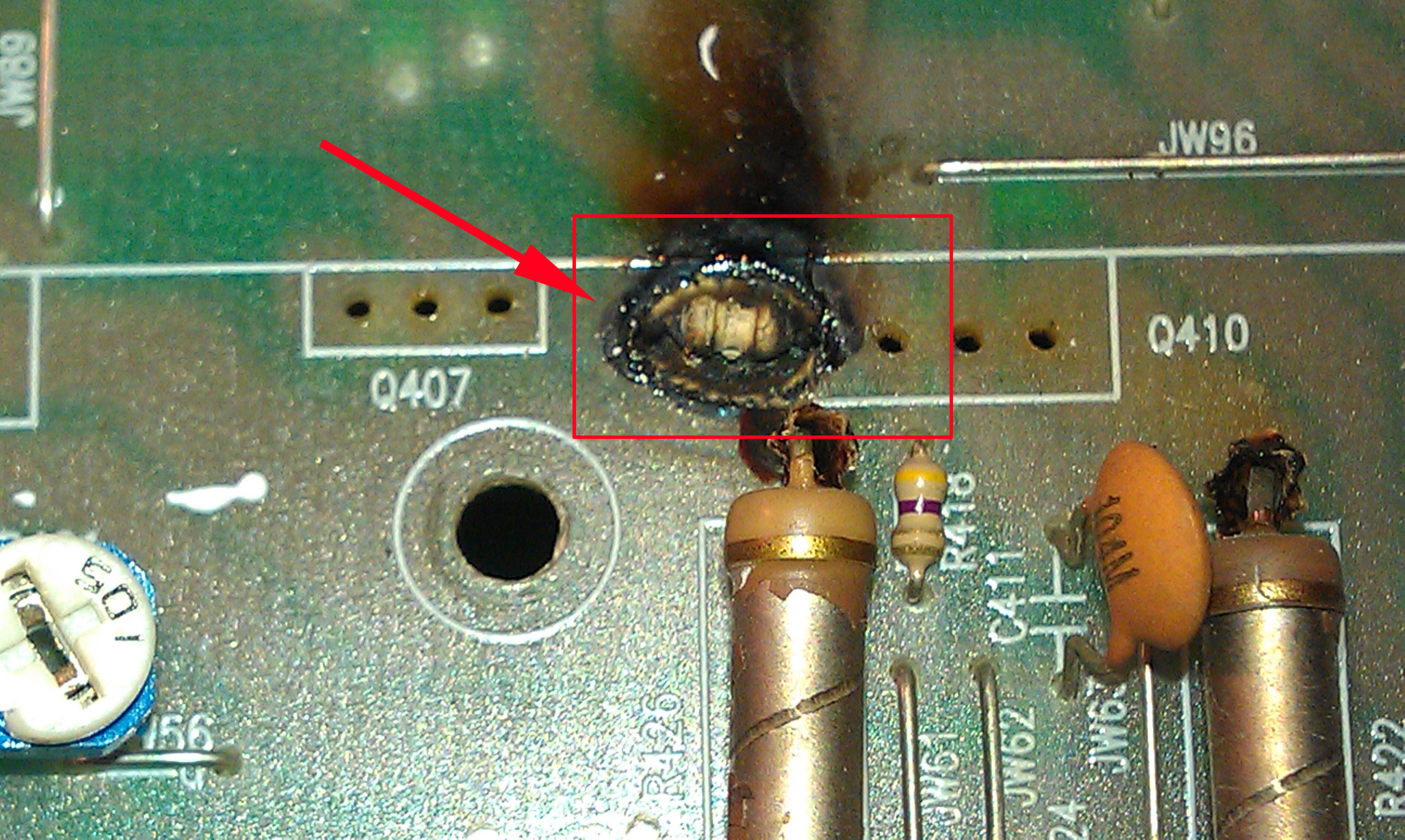
There were several burnt up resistors, including the pair of 2-watt resistors. One small resistor that is mounted under the heat sink actually looked like it exploded or flamed up.
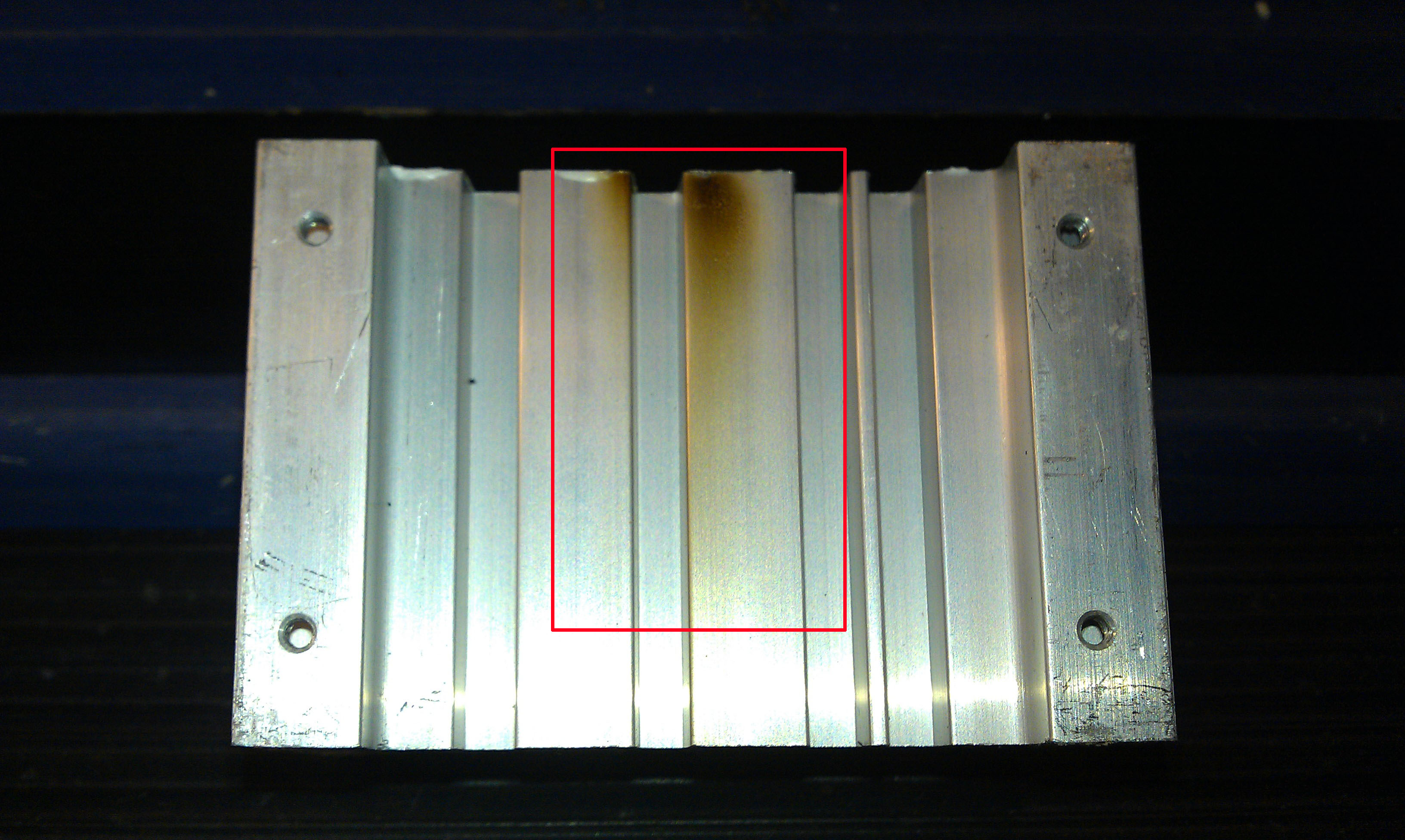
It left a interesting fume patteren on the bottom of the heat sink.
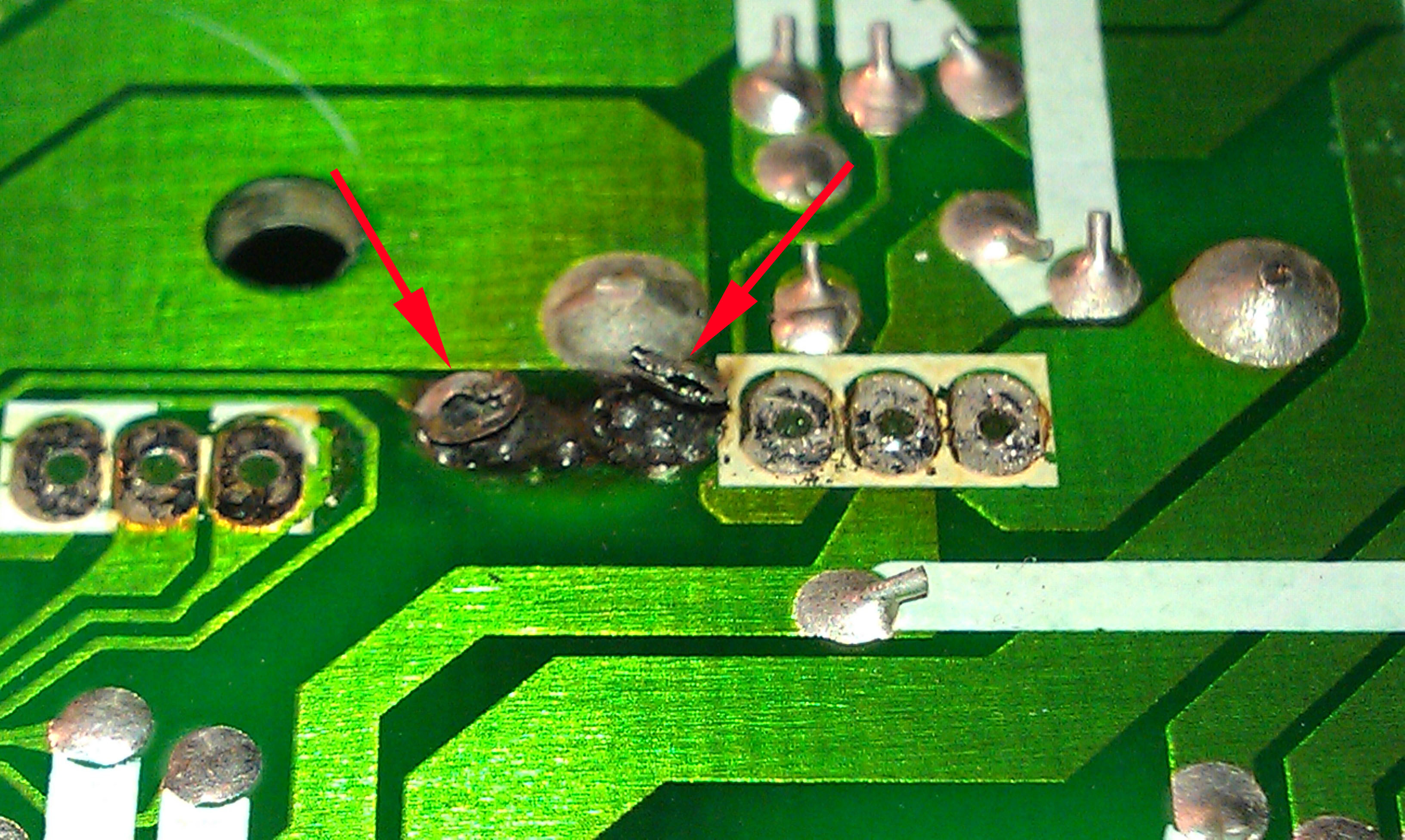
This resistor seems to have been very hot for a long enough period of time which caused the solder pads on the back side of the board to become unglued from the circuit board. It was necessary to solder in jumper wires to makeup for the damaged pads.
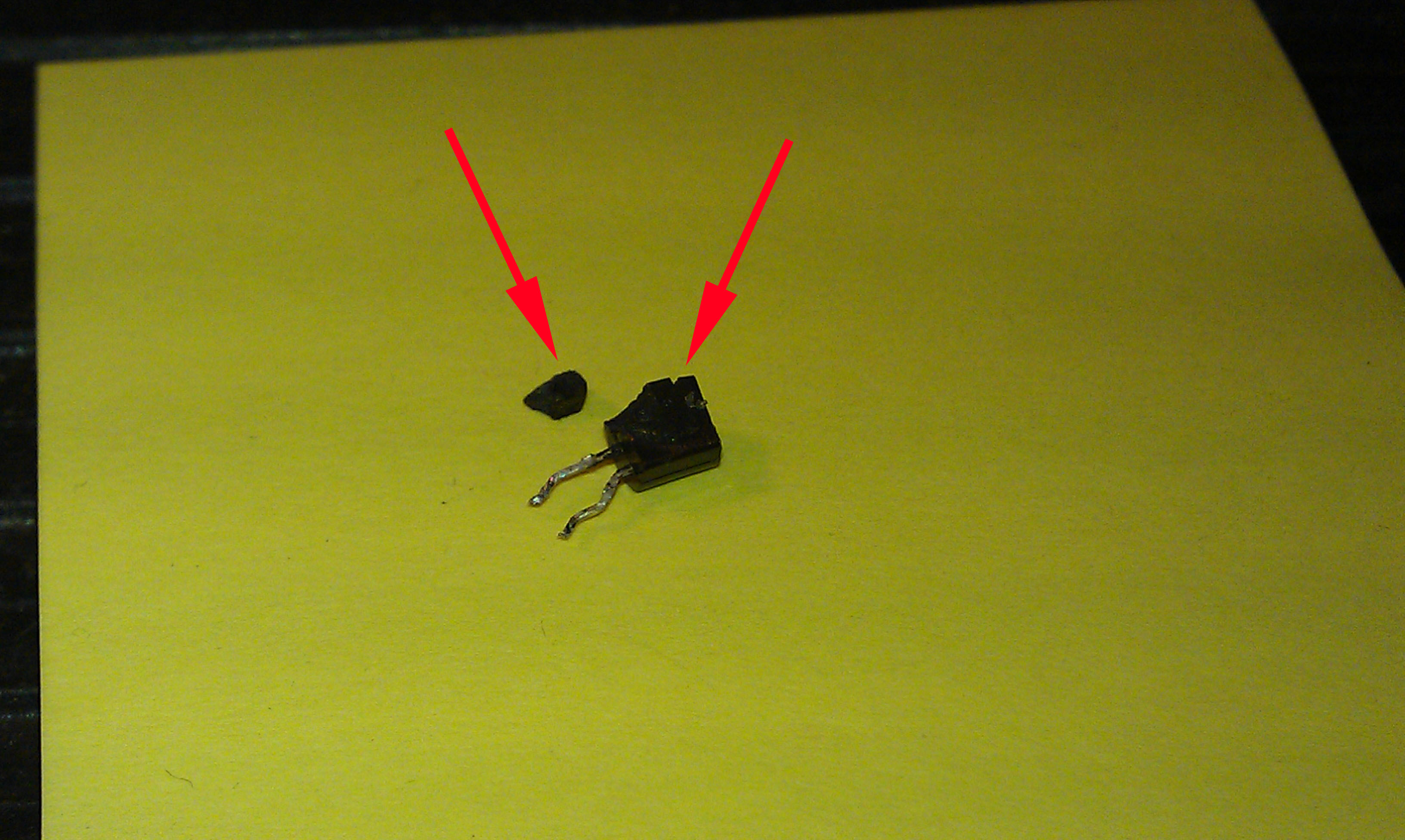
Another difference with this unit was that one transistor actually failed and had a chunck of its case blown off. A transistor has to become very hot for this type of damage to occur.
In the end there were 5 resistors, 5 transistors, 2 voltage regulators, 1 diode and 5 capacitors that were replaced to reapir the IMA3330 and insure proper operation.
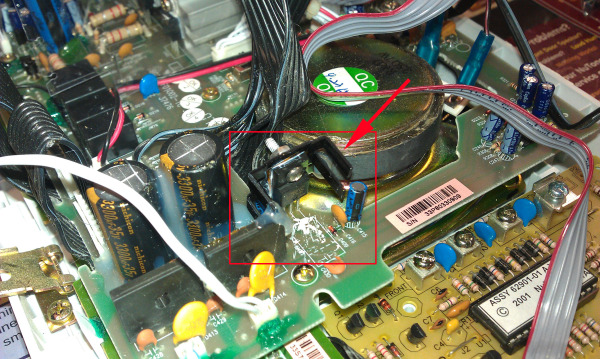
I also added a heat sink to the primary voltage regulator to provide some additional thermal relief to the regulator.
Just to be clear, this type of failure is not a power supply issue. It is most likely caused by the output of the amplifer becomming shorted. The short would most likely be in one (or more) of the cables that run from the IMA3303 Master Station to the remote stations.
In the next few weeks I will be rebuilding one of my shop IMA3303's and setting it up to see if I can make it fail in the same way as this unit.
 Cindy & Christopher
Cindy & Christopher
Here are just a few pictures of an overheated voltage regulator on the Power Supply section of a IM3303 Master Station.
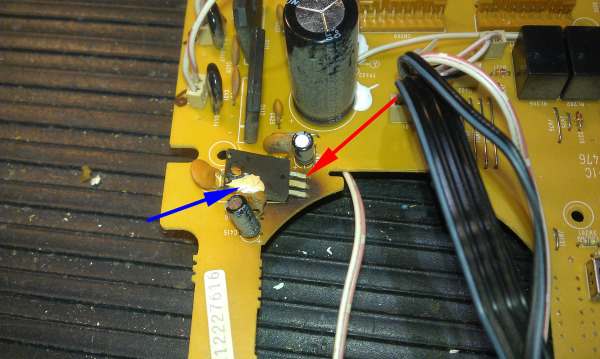
You can see that the circuit board has become dark brown (red arrow) from the heat of the Voltage Regulator. If you look carefully at the white substance (blue arrow) on the voltage regulator, it has cracked from the exposure to the heat.
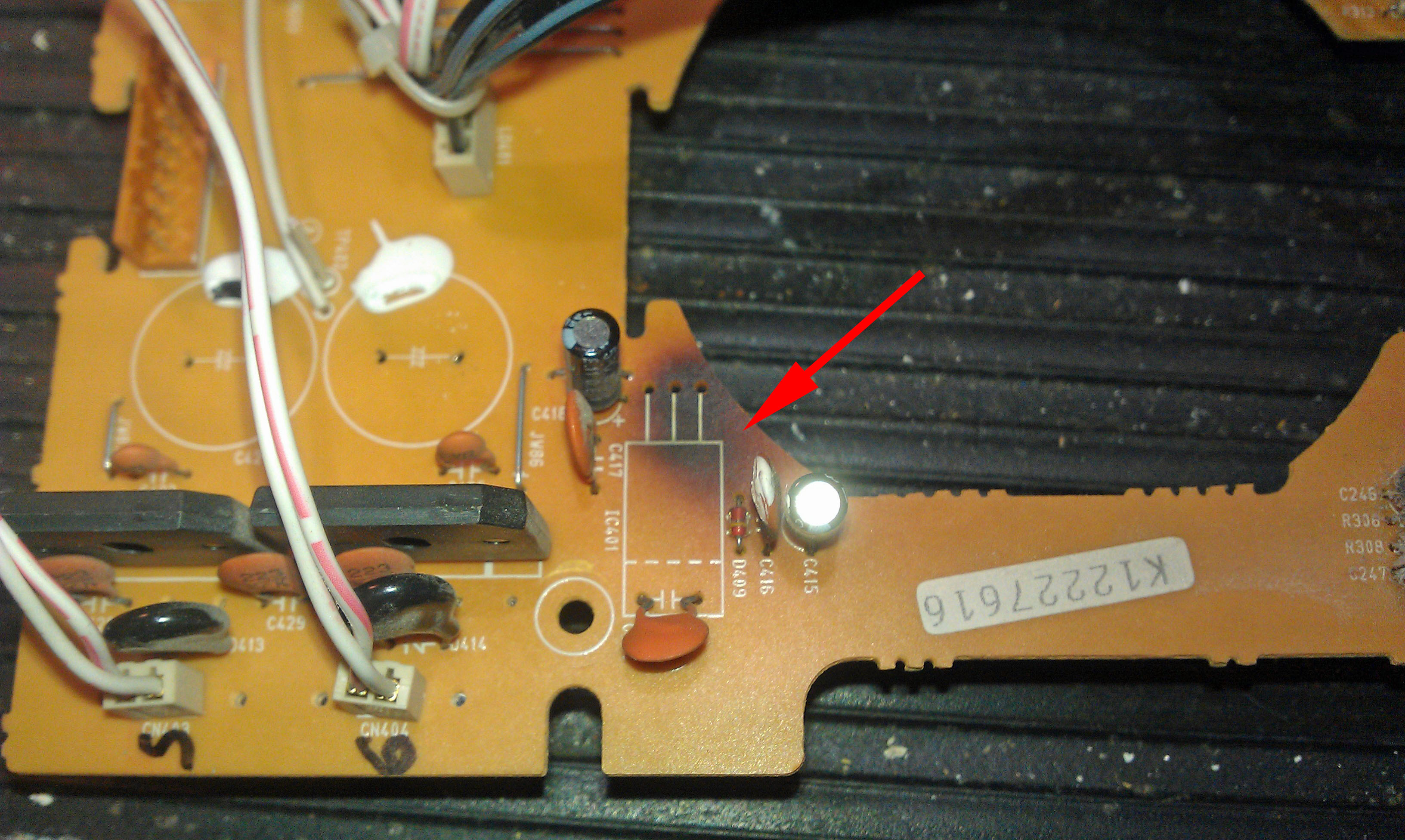
This IM3303 was non-operational when it was delivered. The complete power supply circuit was rebuilt and this IM3303 came back to life.